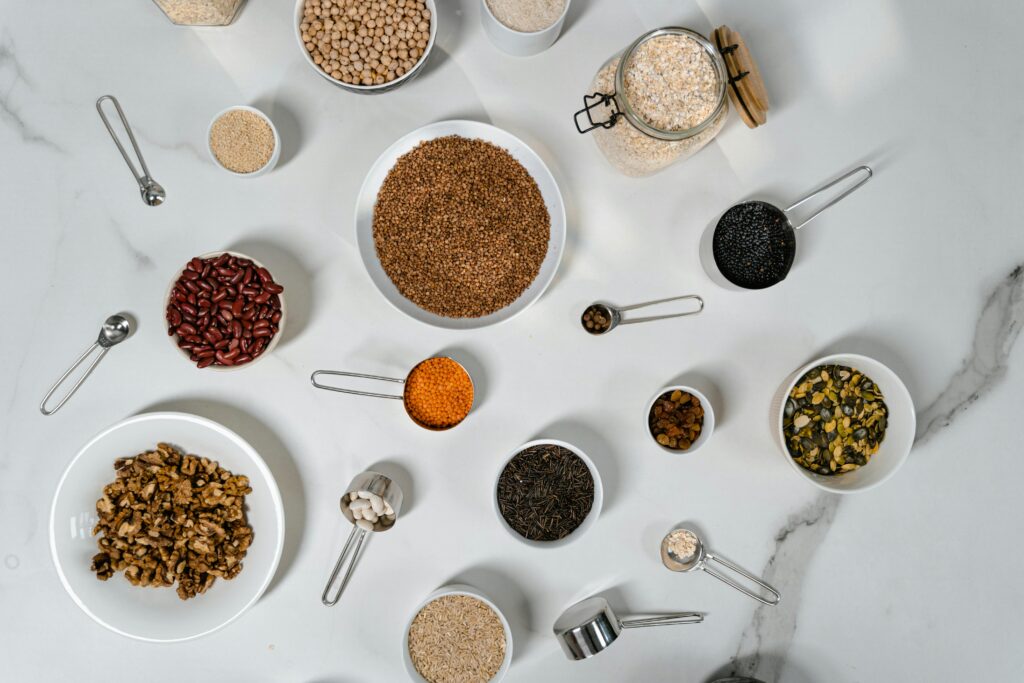
Super seeds like chia, flax, pumpkin, sunflower, and basil seeds are packed with essential nutrients, fiber, protein, and healthy fats, making them a great addition to a balanced diet. However, eating them incorrectly can reduce their benefits and even cause digestive discomfort. In this blog, we’ll uncover common mistakes people make when consuming seeds and how to maximize their nutritional value.
1. Eating Seeds Without Soaking
Why It’s a Mistake:
Many seeds, especially chia, flax, and basil seeds, contain natural antinutrients like phytic acid, which can hinder nutrient absorption. Dry seeds may also cause bloating or digestive issues.
How to Fix It:
Soak seeds in water for at least 30 minutes to a few hours before consumption. This enhances digestion and nutrient absorption (Journal of Food Science and Technology).
2. Consuming Whole Flaxseeds
Why It’s a Mistake:
Flaxseeds have a hard outer shell that our body cannot break down easily, meaning the nutrients pass through undigested.
How to Fix It:
Always grind flaxseeds before consuming them to unlock their omega-3 fatty acids, fiber, and lignans (Harvard T.H. Chan School of Public Health).
3. Overeating Seeds
Why It’s a Mistake:
While seeds are healthy, they are also calorie-dense, and excessive consumption can lead to weight gain and digestive discomfort.
How to Fix It:
Stick to recommended daily portions:
- Chia seeds: 1-2 tbsp per day
- Flaxseeds: 1 tbsp per day
- Pumpkin/Sunflower seeds: ¼ cup per day (National Institutes of Health – NIH)
4. Not Chewing Seeds Properly
Why It’s a Mistake:
Some seeds, like sesame and sunflower, may pass through the digestive tract whole if not chewed properly, reducing nutrient absorption.
How to Fix It:
Make sure to chew seeds thoroughly or incorporate them into smoothies, yogurts, or baked goods (Journal of Agricultural and Food Chemistry).
5. Storing Seeds Incorrectly
Why It’s a Mistake:
Seeds contain healthy fats that can turn rancid when exposed to heat, light, or air, losing their nutritional value.
How to Fix It:
Store seeds in airtight containers in a cool, dry place. For longer shelf life, refrigerate flaxseeds, chia seeds, and sunflower seeds (USDA Food Safety and Inspection Service).
6. Adding Seeds to Unhealthy Foods
Why It’s a Mistake:
Sprinkling seeds on sugary cereals, desserts, or processed foods reduces their health benefits by adding excess sugar and unhealthy fats.
How to Fix It:
Pair seeds with nutrient-dense foods like smoothies, salads, yogurt, or homemade granola (American Journal of Clinical Nutrition).
7. Ignoring Seed Allergies
Why It’s a Mistake:
Some people may experience allergic reactions to sesame, flax, or sunflower seeds, leading to digestive issues, rashes, or swelling.
How to Fix It:
If you’re prone to allergies, introduce seeds gradually and consult a healthcare professional (National Center for Biotechnology Information – NCBI).
Final Thoughts
Seeds are nutritional powerhouses, but consuming them incorrectly can limit their benefits. Soak, grind, store, and portion your seeds properly to ensure maximum health benefits. By avoiding these common mistakes, you can harness the full potential of super seeds for better digestion, weight management, heart health, and overall well-being.
References
- Harvard T.H. Chan School of Public Health – Nutritional Benefits of Flaxseeds
- Journal of Food Science and Technology – Soaking and Nutrient Absorption
- National Institutes of Health (NIH) – Recommended Daily Seed Intake
- Journal of Agricultural and Food Chemistry – Proper Digestion of Seeds
- USDA Food Safety and Inspection Service – Best Storage Practices for Seeds
- American Journal of Clinical Nutrition – Impact of Seeds in a Balanced Diet
- National Center for Biotechnology Information (NCBI) – Seed Allergies and Reactions
